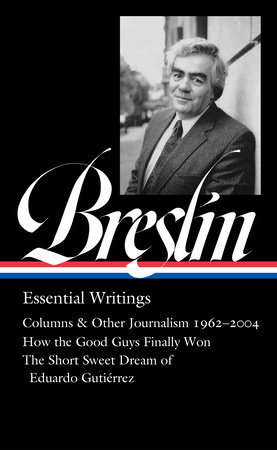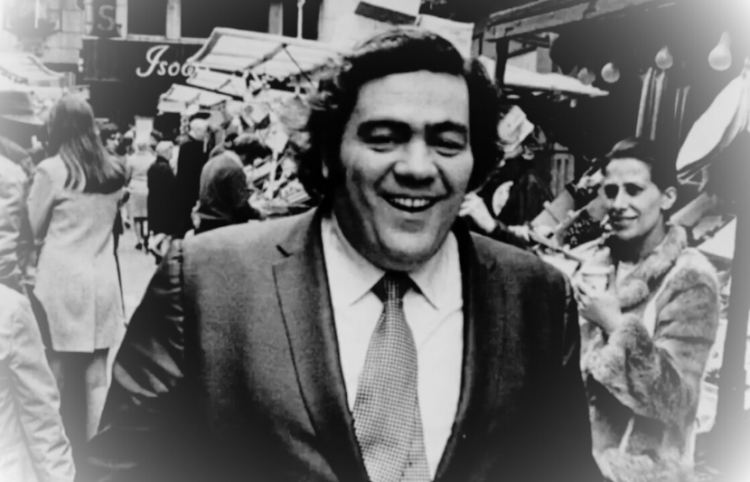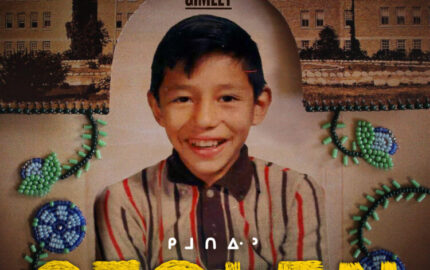The book arrived in the afternoon mail: “Jimmy Breslin: Essential Writings.” I opened to the first story, figuring I’d take a quick look. It was a longish piece written in 1960 about some jockey I’d never heard of. Despite the recent news about Kentucky Derby thoroughbreds dying, I have neither interest in nor knowledge of horse racing. I thought I’d read a few grafs of the story, then set it aside while I tended to other tasks. Instead I stood at the kitchen counter and read the whole thing, more than 5,000 words on a subject I cared nothing about. Until this guy Breslin made me care.
I knew who Breslin was. You’ve probably heard of him, too. He was a legendary New York journalist, a prolific writer of newspaper columns for the New York Herald Tribune, the New York Journal-American, the New York Daily News, and Newsday. In his day — and he had a long “day,” reporting pretty much nonstop from 1960-2012 — he was known for his unique storytelling, his thinking-outside-the-box approach to reporting, his attention to working class people and his colorful personality.
But maybe, like me, you didn’t read Breslin in real time, and you haven’t read him anthologized in a long time. Or maybe ever. Let’s correct this now! His work is masterful, and we can learn from it.
A good place to start is the new anthology, edited by Dan Barry of The New York Times, who knew Breslin and was inspired by his signature approach to journalism.
Breslin got the facts, stuck to the facts, and then wrote the hell out of the story.
But before the tutorial, consider first the breathtaking breadth of Breslin’s work: He wrote about horse racing, boxing and baseball. He wrote about Vietnam, Watergate and the American Civil Rights Movement. He wrote about the assassinations of Malcolm X, JFK, and John Lennon. He wrote about Lyndon Johnson in an operating room undergoing gallbladder surgery and Bobby Kennedy in a taxi talking about ice cream and how his dog peed on a famous senator’s rug. He wrote about Big Mama Nunziata, the 77-year-old matriarch of the infamous Gallo crime family. He wrote about gravediggers and cops and longshoremen and waitresses, about teachers and bartenders and taxi drivers. And he wrote, for the most part, under deadline. Let that sink in for a moment.
Here are a few first lines from a sampling of his hundreds of columns:
Patricia Anne Doss, ten, stood in the red dirt and twitched her black toes to brush away the ants crawling over her feet.
All day the helicopters came down out of the terrible sun to pick up the wounded who were wrapped in bandages with blood coming through and the dead whose bodies were in chunks inside ponchos.
It was as graceless at the end as it was at the start.
The hand that rocked the bureaucracy into motion was found, of a Sunday night in June 1974, wrapped around a glass.
How could a reader not read on?
Craft behind the art
More important question: How does Breslin do it?
Let me start with the 30,000-foot answers: He loved what he did, and that showed in every piece he wrote. He respected the people he wrote about, and they felt that, so they trusted him. He had enormous, prodigious, unflagging energy. He was interested in everything. He was the summa cum laude of extroverts.

Okay, but what about craft?
The guy could write a scene. He could write a scene because, in the moment, out there reporting, on deadline, he was in the moment. He noticed everything. He looked everywhere. He listened. He talked to whomever was around. He was out there — not behind a desk, not talking on the phone — but immersed in the worlds he was reporting on. That’s known, endearingly I think, as shoe-leather work. He knew when to describe, when to explain, when to let his subjects tell the story.
Here he is writing about the printing of the final edition of the New York Mirror in “The Wake for a Newspaper” in 1963. Selig Adler was the paper’s managing editor.
Adler walked down one flight of stairs from his office to the Mirror composing room and handed the copy to Marty Tanzer, who was in charge of distributing it to the typesetters.
“What’s this?” Tanzer asked.
“Set this in type and then go get yourself a job,” Adler said. He took the cigarette out of his mouth and walked out of the composing room.
Here he is with an opening scene of the kind of Thanksgiving Day column no one else would think of writing:
There are no ashtrays on the tables of the Automat. People who smoke sit too long at a table, and the Automat is a place for volume. So yesterday, in the Automat at 33rd St. and Eighth Ave., the men used their empty coffee cups for putting out cigarettes during the long, deadening afternoon.
And this — prepare yourself for the most powerful, graceful run-on sentence this side of William Faulkner — is Breslin reporting from Saigon in 1965:
The rain came down on the dullness and squalor of Saigon and drove the people from the streets, the old men who use them for bathrooms, the naked children who crouch in the dirt in front of the shack house, the women who are creased and wispy, the government clerks who ride bicycles and have only small lives in front of them, the American soldiers in short-sleeved shirts who come in washed and red-faced and try to make it a service town but are defeated by its dullness, the policemen who wear white uniforms with sooty collars, and the small round-shouldered men who are of military age but have been let out of the army after three years because the country has been at war for so long that there is no more urgency to it.
Breslin was also a master of voice and tone. He was often smart, quick, and conversational — the guy on the barstool next to you telling a story. When Viking published an anthology of his columns in 1967, “The World of Jimmy Breslin,” the review in the Los Angeles Times characterized Breslin’s style as “ a pound of Hemingway and a pound of Joyce and 240 pounds of Breslin.”
He could also be witty, as in this one-line send-up of the 1962 Mets:
The Mets are bad for many reasons, one of which is that they do not have good players.
And a smart-ass, as in this opening scene from a 1969 piece about Joe Namath:
The barmaid had long black hair and she was sitting on top of the bar with her chest coming out of her dress and her skirt useless against the amount of legs she was showing.”
(One can almost forgive the sexism because the description is so good.)
He knew when to underplay, to report with clinical precision, leaving the emotion to the reader, as in this from his on-the-scene reporting of Malcolm X’s murder:
Malcolm X went straight back and the sound of his head slamming the wooden floor was mixed with screams as he lay on his back on the stage of an old ballroom on 166th Street and Broadway and he died while two others in the crowd fired their guns, a big-slugged .45 and a .38.
DIY Breslin
After experiencing intense admiration, a soupçon of jealousy, and a dose of nostalgia for the journalism of yore, what can we learn from the work of Jimmy Breslin? Here, I believe, are the simple but powerful take-home messages:
It is possible to do this work. It is possible to write with clarity and grace, with a distinct voice, with narrative structure — on deadline. He did it.
Nothing substitutes for shoe-leather reporting. Today we live and work (and love) in virtual bubbles. But if we want to bring readers to a place, we have to be there ourselves. And not just to dash out to report a particular story. To walk the streets, to talk to passersby, to go to events, to learn about, observe and wrap ourselves in the communities we write about.
Maybe the story is outside the frame. Let other reporters look straight ahead. We can follow Breslin’s lead and look to the sides, or behind. Think of Breslin going to an Automat on Thanksgiving to observe the old men who eat there. Think of Breslin writing about the shooting of John Lennon not as a crime story, and not with John Lennon at the center, but from a cop’s eye view. Think of Breslin writing about the man tasked with digging JFK’s grave. It’s as simple — and as challenging — as turning your head, as looking elsewhere, as hearing and listening to other voices.
Tone and voice are not the sole property of fiction writers. Breslin got the facts, stuck to the facts, and then wrote the hell out of the story. He spoke to readers from the page, his voice reflecting both the subject matter and his own personality. He did this without becoming part of the story or overwhelming the story. He did this not just by knowing who he was, but by spending the time to know whom he was writing about.
Reading him does not have to be an exercise in nostalgia. It can be a lesson in what great journalism can be.
Breslin basics
Jimmy Breslin was born to a working-class Irish-American family in 1928, in Queens, New York. He began his long career as a copy boy at the Long Island Press (a college drop-out who “majored in excuses”) later working for a string of New York newspapers. His work earned him two Pulitzers, a Metropolitan Reporting Award, a Damon Runyon Award (for distinctive writing style) and many other accolades. He wrote his final column in 2012. He died in 2017.
* * *
Lauren Kessler is an Oregon-based narrative journalist, teacher and author of 15 nonfiction books.



